Labuhan Deli: A flourishing future
The following text was published in the Cultural Heritage Agency's (RCE) publication Tijdschrift in February 2024.
In Medan, many Dutch-era colonial buildings are currently being restored. Less well known is that the origins of this Indonesian metropolis lie in the small town of Labuhan Deli. Today, it is a somewhat forgotten area in the city’s northern reaches. But initiatives are taking shape to save Labuhan Deli’s cultural heritage as well, and hopefully providing a flourishing future for town’s community.
Written by Jacqueline Rosbergen, Hasti Tarekat and Peter Timmer
Around 1900, Medan was hailed as the Paris of Sumatra. Rich profits from local tobacco plantations enabled the Sultan of Deli and the Dutch Deli Company to erect grand buildings with lavish architecture. In a short span of time, an entire city and an extensive railway network were developed in this part of the Dutch East Indies. Today, many historic buildings in the metropolis of Medan still stand in decay. But not for much longer. The pace of restoration efforts, the opening of museums and the refurbishment of public spaces is rapidly gaining steam. These days, the repurposing of abandoned cultural heritage has become all the rage in Indonesia.
The government and other actors in Medan are actively involved in these efforts. Key among these organisations is the privately run Beranda Warisan Sumatra, or Sumatra Heritage Trust, which has expanded its sights to the Labuhan Deli district. Once the bustling capital of the sultanate, until it was supplanted by the newly built Medan, much of the town has now fallen into neglect and ruin. The Sumatra Heritage Trust recently organised a workshop focused on preserving Labuhan’s heritage and revitalising the area. The Dutch Heritage hands-on agency and the RCE took part in this workshop.
[Text continues below the image]
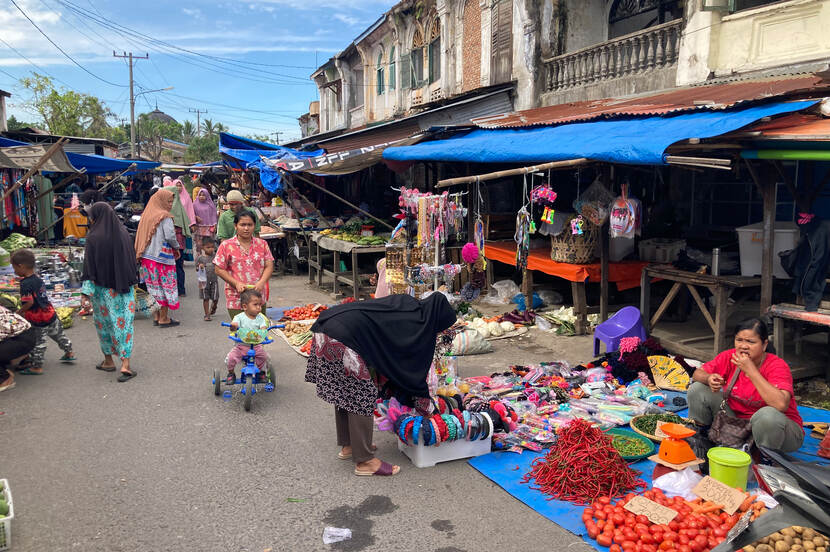
Source of identity
The Sumatra Heritage Trust regards heritage as a source of identity and a foundation for the future development of Indonesia. The Trust is run wholly by volunteers, numbering approximately twenty in all, mostly students. It played a pioneering role in establishing the Pan-Sumatra Network for Heritage Conservation; an alliance of heritage groups and experts working on and around Sumatra. Originally, the Trust operated primarily as a watchdog group for listed buildings in Medan. Its campaign in 2002 opposing the demolition of the Mega Eltra building, constructed in 1912 to headquarter the Lindeteves-Stokvis company, garnered nationwide attention and has come to be seen as a milestone of Indonesia’s budding heritage movement. Now, more than twenty years later, Indonesia’s heritage landscape is very different. Heritage conservation is fully rooted and the Sumatra Heritage Trust’s role has evolved from watchdog to advisor and mentor. Many of its former staff members have gone on to careers as consultants, civil servants, university lecturers and heritage experts throughout Indonesia.
[Text continues below the image]
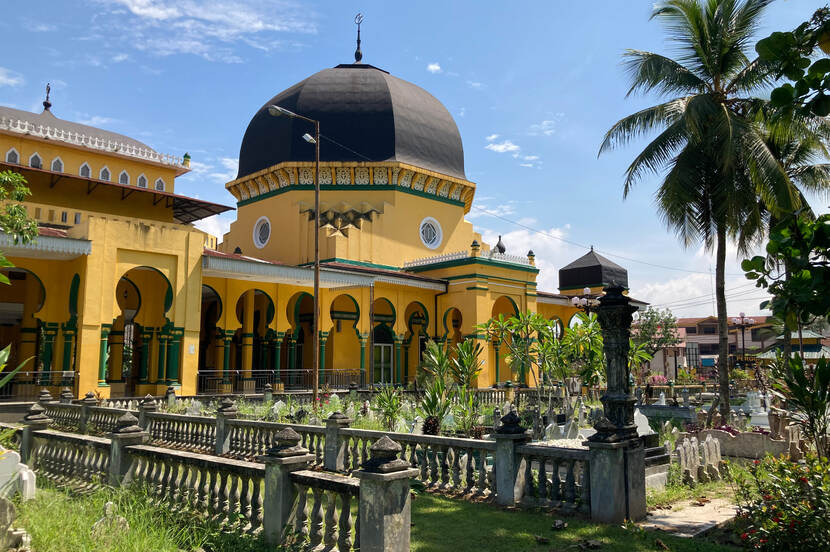
Orientalism
Cemented in the wall of the Al-Osmani Mosque in Labuhan Deli is an unusual marble plaque from 1927. On it is the inscription: ‘Restored for H.H. the Sultan of Deli and presented by the Deli Company’ (in Dutch: ‘Gerestaureerd voor Z.H. den sultan van Deli en aangeboden door de Deli Maatschappij’). Displaying architectural features of orientalism, this building would not look out of place in the Near East or India. The myriad green elements symbolise Islam, while the predominant yellow is undeniably indigenous Malay. The mosque’s massive door has Chinese-style motifs. As a whole, the structure reflects the multicultural history of the area. The present building replaced a traditional wooden mosque that had stood here since 1854 and bears the unmistakable stamp of the Dutch architect Gerard Langereis, who also designed other mosques for sultans in the region in the late nineteenth century.
Labuhan Deli was of great importance to the Sultanate of Deli at the time. A bustling port town, that was strategically located on the Deli River and linked the Sumatran hinterland with the Straits of Malacca. The sultan ruled his territory from the kraton, his royal residence, opposite the mosque. The first plantations were also established out of Labuhan Deli by the Dutch and other Europeans based there. When the sultan moved to the new city of Medan, more Chinese settled in Labuhan. Along with Javanese and Indians, they were employed in large numbers as indentured labourers or wage slaves on the European plantations. Known as ‘coolies’, they worked in appalling conditions and complete lawlessness. In 1902, the Dutch lawyer Johannes van den Brand exposed these abuses in a famous pamphlet entitled The Millions from Deli. But nothing really changed.
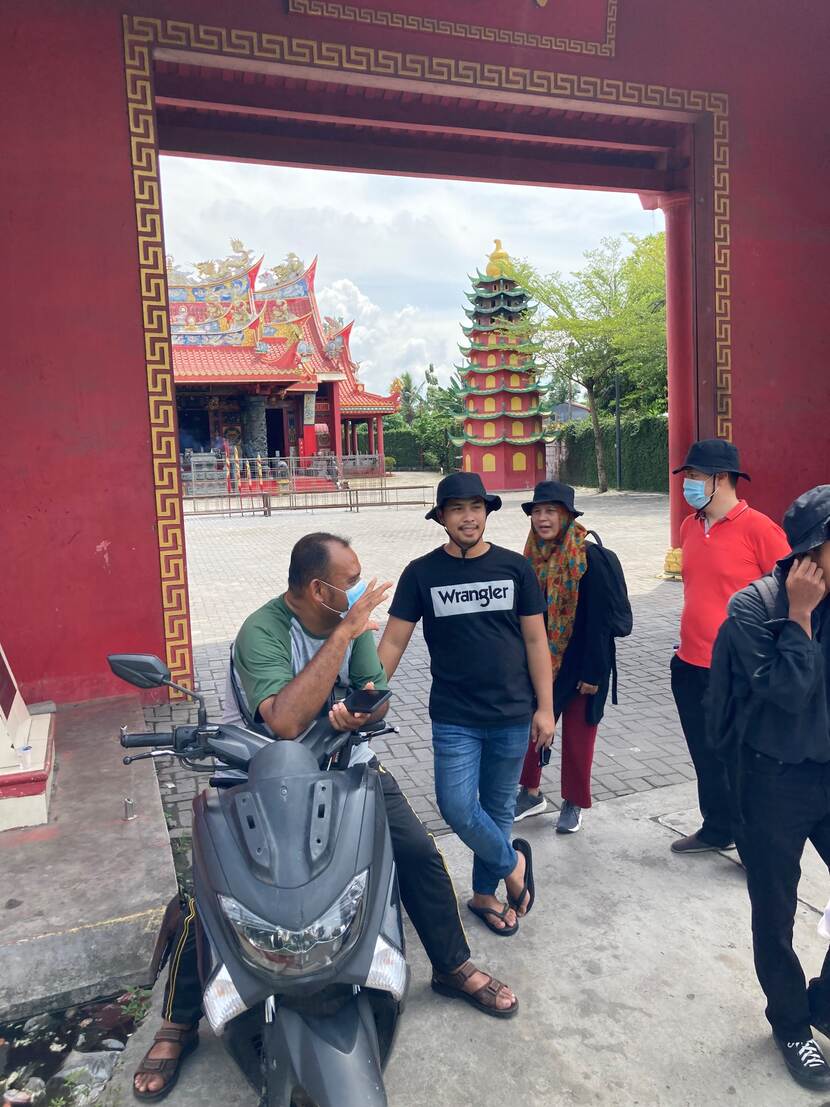
Chinese temples
The kraton has since been torn down, but the imposing Al-Osmani Mosque still dominates the urban landscape of Labuhan Deli. Several royal tombs can be found around the building. Also notable are two colourful Chinese temples. Along the town’s main street are characteristic shophouses of the type found in Chinese neighbourhoods throughout South-east Asia. After violent outbreaks during the 1998 reformasi, the Chinese left Labuhan Deli and resettled in Medan, which remained peaceful. However, they still regard Labuhan’s largest temple, Siu San Keng, as a kind of mother temple and return there every year to honour their ancestors.
An old customs office built by the Dutch recalls the city’s history as a port. It overlooks the main street, where a busy Malaysian market is held every morning, drawing crowds from all over the region. These days, Labuhan Deli no longer has a harbour. Its port activities dried up after colonial construction of the large new Port of Belawan on the coast. However, Labuhan Deli did get its own railway station on the Medan-Belawan line. Apart from some plants growing from the roof, this Art Deco station building is still in good condition. The railway is used only for goods transport nowadays, not for passengers.
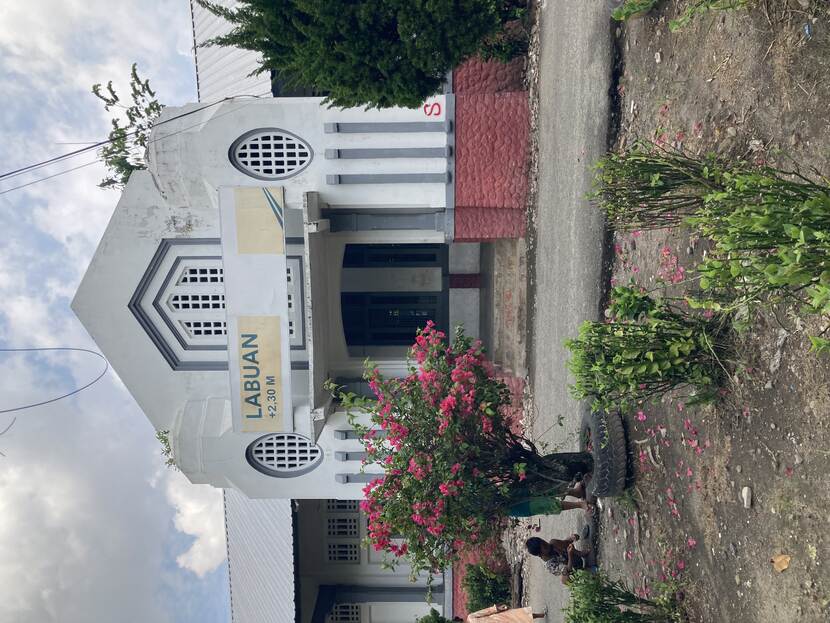
No easy task
Though Labuhan Deli boasts an impressive heritage, restoring it will be no easy task. The beautiful shophouses stand empty and are slowly falling into disrepair. Poverty and pollution are major problems, but flooding also requires urgent action. The question is how to address these issues and what role heritage may be able to play. This was the central question of the workshop organised by the Sumatra Heritage Trust. Participants included Indonesian students, university lecturers and local residents with backgrounds in building and landscape architecture, tourism and economics. Together, they brainstormed ideas to renovate Labuhan Deli, invest it with a new future and improve housing and living conditions.
The workshop followed a method developed in collaboration with the University of Indonesia, Universitas Trisakti, Institut Pertanian Bogor, Heritage hands-on and the RCE, consisting of a ‘Historic Urban Landscape Quick Scan’ focusing on the future of historic urban sites and citizen participation. The Sumatra Heritage Trust hosted the workshop in the Al-Osmani Mosque’s library building in the heart of Labuhan Deli. The location was chosen with a view to fostering engagement among area residents. A consultation was also held with local community representatives in which participants shared a wealth of knowledge. In another session, a hydrologist was invited to set out his vision on water management. All of these activities provided valuable input that participants of the workshop incorporated into their proposals.
[Text continues below the image]
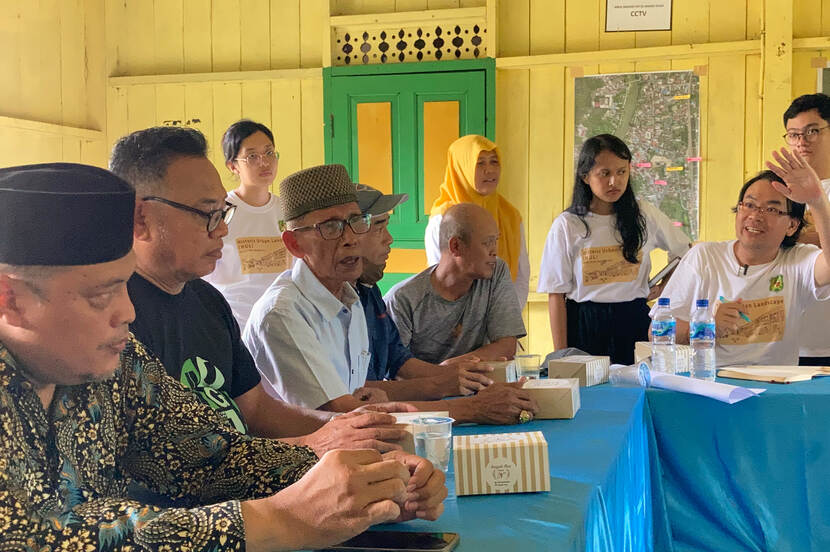
Connection
Aside from doing advance research, it is also vital to go around the place itself, talk to local residents and business owners and invite them to take part in the workshop. It is an event where they can all connect. Heritage turns out to be something the population of Labuhan Deli care about deeply. Stories of recurrent flooding and the brown haze blanketing the streets are more than just a backdrop here. Any attempt to give the area a boost will have to tackle such underlying conditions as well. The method therefore puts forward an integrated approach, one keyed to both the rich history of Labuhan Deli in relation to Medan and Belawan and its current situation. It is essential to make that history visible and to tap into its unique aspects. It also places an explicit emphasis on local identity, the multicultural community, its harmony, the surrounding nature and living conditions. To give an example: along all the roadsides in Labuhan are drainage channels. Inspired by the hydrologist’s presentation, a proposal was made to reinforce the river embankment and improve drainage as a measure to mitigate flooding.
Heritage trail
To promote local economic development, participants developed a proposal for a heritage trail. This proposal makes the most of the historic Chinese shophouses. Fronted with distinctive arcades or colonnades and direct functional link with the adjacent public space, the marketplace, they can play an important role. Further proposals provide for creating access to and taking advantage of the river as part of the heritage trail, and for improvements to public areas. There is also an interest in resuming local passenger rail services and thus restoring the Dutch colonial-era railway station to its former glory.
Pursuing quick wins is important to gain immediate results with minimal resources and so create a sense that things are happening. An example is planting the heritage trail with local vegetation such as bougainvillea. These tall shrubs with big, colourful flowers require no tending and are therefore easy to sustain in this climate, while also functionally disguising the trail’s condition and instantly making it more attractive. Given the high rate of social media engagement across all levels of the Indonesian population, the idea was also raised to develop a website. Many traditions still survive, though sometimes dormant – such as culinary customs and Malay dance – and a website could play an important part in reviving them.
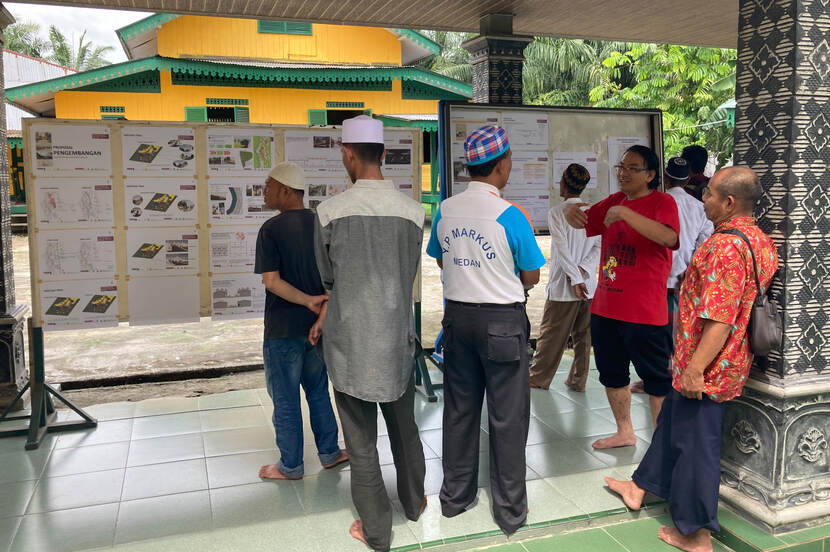
Positive response
On the final day of the workshop, the Al-Osmani Mosque slowly filled up for traditional Friday afternoon prayer. Mosque-goers discussed suggestions for revitalising Labuhan Deli based on posters hung up by the workshop participants. After prayer, a presentation was held on the mosque’s covered terrace. The response was largely positive, though some reservations were expressed as well. Local government has so far not given Labuhan Deli the attention it deserves and the community feels it has been forgotten. Consequently, there is a general recognition that regaining residents’ trust will be an essential first step going forward.
Meanwhile, the Sumatra Heritage Trust and a number of the workshop participants are already working on new activities in Labuhan Deli. A good example is the Urban Sketchers event held last November. Using the heritage trail as developed in the workshop, young people from Medan sketched places of special significance in the picturesque district. More events will follow this year, and the local Medan government will incorporate the results of the workshop in an area plan. Slowly but surely, little Labuhan Deli is thus being rediscovered by its larger successor.